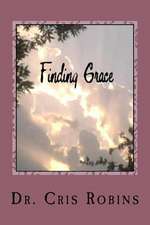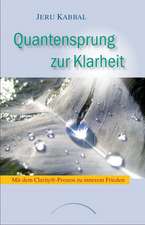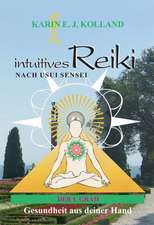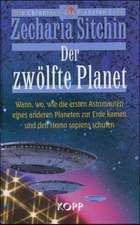The Earth Chronicles Handbook: A Comprehensive Guide to the Seven Books of The Earth Chronicles
Autor Zecharia Sitchinen Limba Engleză Hardback – 26 mar 2009
Preț: 173.81 lei
Nou
Puncte Express: 261
Preț estimativ în valută:
33.26€ • 34.72$ • 27.53£
33.26€ • 34.72$ • 27.53£
Carte disponibilă
Livrare economică 14-28 martie
Preluare comenzi: 021 569.72.76
Specificații
ISBN-13: 9781591431015
ISBN-10: 1591431018
Pagini: 240
Dimensiuni: 152 x 229 x 23 mm
Greutate: 0.45 kg
Editura: Inner Traditions/Bear & Company
Colecția Bear & Company
Locul publicării:United States
ISBN-10: 1591431018
Pagini: 240
Dimensiuni: 152 x 229 x 23 mm
Greutate: 0.45 kg
Editura: Inner Traditions/Bear & Company
Colecția Bear & Company
Locul publicării:United States
Notă biografică
Zecharia Sitchin (1920-2010), an eminent Orientalist and biblical scholar, was born in Russia and grew up in Palestine, where he acquired a profound knowledge of modern and ancient Hebrew, other Semitic and European languages, the Old Testament, and the history and archaeology of the Near East. A graduate of the University of London with a degree in economic history, he worked as a journalist and editor in Israel for many years prior to undertaking his life’s work--The Earth Chronicles.
One of the few scholars able to read the clay tablets and interpret ancient Sumerian and Akkadian, Sitchin based The Earth Chronicles series on the texts and pictorial evidence recorded by the ancient civilizations of the Near East. His books have been widely translated, reprinted in paperback editions, converted to Braille for the blind, and featured on radio and television programs.
One of the few scholars able to read the clay tablets and interpret ancient Sumerian and Akkadian, Sitchin based The Earth Chronicles series on the texts and pictorial evidence recorded by the ancient civilizations of the Near East. His books have been widely translated, reprinted in paperback editions, converted to Braille for the blind, and featured on radio and television programs.
Extras
Introduction
Wisdom hath built her house;
She hath hewn out her seven pillars.
Proverbs 9:1
The seven books that comprise The Earth Chronicles began neither as a preconceived series nor even as a book. As an oak tree with seven branches, its acorn seed was a schoolboy’s query why a word in the Hebrew Bible--Nefilim--that derives from the verb meaning To Fall, To Come Down, was translated ‘Giants’. The schoolboy was I; the word is in Genesis chapter 6; the search for an explanation lasted a lifetime; the answer required--as the Bible itself does--going back to the Beginning.
The quest for the biblical Beginning opened a Pandora’s Box filled with countless more questions. Why does the Bible describe the Nefilim as “sons of the gods” who chose wives from among the “daughters of the Adam”? Who were the Elohim who had fashioned the Adam in their image? Was there a Garden of Eden, and if yes, where and what was it? Was there a Deluge, was there a Noah, and if yes, who was he? How didMankind learn how the Heavens, the Earth, and Man himself had been created? What scientific knowledge had existed in antiquity--indeed, how did Civilization itself begin? Was there a kingdom in a land called (in the Bible) Shine’ar that preceded ancient Babylon, Assyria, Egypt? And how did other civilizations arise around the world with uncanny similarities to the olden ones?
Unavoidably, the quest spread from Bible to archaeology. There was indeed a Cradle of Civilization in the ancient Near East; its monuments, artifacts, and written records unfolded a vivid history of lands and peoples whose tales of gods of heaven and Earth led through mythology to religion, from astronomy to genetics. Before long, what began as a simple question mushroomed to embrace virtually every scholarly discipline, ranging from the depths of Earth to the Solar System and Outer Space, from the Past to the Future, from the Beginning to the End of Days.
As one book followed another, spanning the continents, diverse cultures and even different religions, it became evident that these were all branches of the same one tree. A Global Theory emerged, and the tales of gods and men were rendered in my books as a unified history of Earth and Mankind. The pantheons of Greece and Rome, of Aztecs and Hindus are identified as those of Sumer and Babylon; the Mayan and Olmec calendars are compared to those of Assyria and Egypt; Inca tales of creation or a day the sun stood still echo the Hebrew Bible; pyramids and massive stone circles in varied lands reveal a basic kinship. It all makes sense because it explains the otherwise inexplicable, by my unique assertion that there is one more planet in our solar system which periodically nears our vicinity, whose astronauts had come to Earth, fashioned Mankind, were its gods, and when they left promised to return.
The result of decades of research, study, and writing is thus daunting in its scope. The seven books of The Earth Chronicles total more than 2,300 pages; and I have often been asked by readers: How does one ‘keep a handle’ on all that mass of information? Guided by readers’ queries, this Handbook is the answer; alphabetically arranged, its hundreds of entries provide the relevant data about gods and demigods, kings and kingdoms, patriarchs and priests, archaeological sites and mythical places. Entries indicate links to related entries, and--when appropriate--add the particular or innovative ‘take’ of “ZS” on the subject. By applying a Uniform Answer to the diverse civilizations and periods, this Handbook serves as the first attempt ever to globalize ancient knowledge.
This Uniform Answer has stood the test of time: Every discovery, every technological advance, that have taken place in the past decades have invariably corroborated, without fail, the ancient evidence that others ignore or dismiss as Myth but that I consider Truth. In a way--in a significant way--the seven volumes of The Earth Chronicles have emerged as a depository of global Ancient Knowledge, the precious treasure that the Bible calls Wisdom.
They are, in a way, the Seven Pillars of Ancient Wisdom.
Wisdom hath built her house;
She hath hewn out her seven pillars.
Proverbs 9:1
The seven books that comprise The Earth Chronicles began neither as a preconceived series nor even as a book. As an oak tree with seven branches, its acorn seed was a schoolboy’s query why a word in the Hebrew Bible--Nefilim--that derives from the verb meaning To Fall, To Come Down, was translated ‘Giants’. The schoolboy was I; the word is in Genesis chapter 6; the search for an explanation lasted a lifetime; the answer required--as the Bible itself does--going back to the Beginning.
The quest for the biblical Beginning opened a Pandora’s Box filled with countless more questions. Why does the Bible describe the Nefilim as “sons of the gods” who chose wives from among the “daughters of the Adam”? Who were the Elohim who had fashioned the Adam in their image? Was there a Garden of Eden, and if yes, where and what was it? Was there a Deluge, was there a Noah, and if yes, who was he? How didMankind learn how the Heavens, the Earth, and Man himself had been created? What scientific knowledge had existed in antiquity--indeed, how did Civilization itself begin? Was there a kingdom in a land called (in the Bible) Shine’ar that preceded ancient Babylon, Assyria, Egypt? And how did other civilizations arise around the world with uncanny similarities to the olden ones?
Unavoidably, the quest spread from Bible to archaeology. There was indeed a Cradle of Civilization in the ancient Near East; its monuments, artifacts, and written records unfolded a vivid history of lands and peoples whose tales of gods of heaven and Earth led through mythology to religion, from astronomy to genetics. Before long, what began as a simple question mushroomed to embrace virtually every scholarly discipline, ranging from the depths of Earth to the Solar System and Outer Space, from the Past to the Future, from the Beginning to the End of Days.
As one book followed another, spanning the continents, diverse cultures and even different religions, it became evident that these were all branches of the same one tree. A Global Theory emerged, and the tales of gods and men were rendered in my books as a unified history of Earth and Mankind. The pantheons of Greece and Rome, of Aztecs and Hindus are identified as those of Sumer and Babylon; the Mayan and Olmec calendars are compared to those of Assyria and Egypt; Inca tales of creation or a day the sun stood still echo the Hebrew Bible; pyramids and massive stone circles in varied lands reveal a basic kinship. It all makes sense because it explains the otherwise inexplicable, by my unique assertion that there is one more planet in our solar system which periodically nears our vicinity, whose astronauts had come to Earth, fashioned Mankind, were its gods, and when they left promised to return.
The result of decades of research, study, and writing is thus daunting in its scope. The seven books of The Earth Chronicles total more than 2,300 pages; and I have often been asked by readers: How does one ‘keep a handle’ on all that mass of information? Guided by readers’ queries, this Handbook is the answer; alphabetically arranged, its hundreds of entries provide the relevant data about gods and demigods, kings and kingdoms, patriarchs and priests, archaeological sites and mythical places. Entries indicate links to related entries, and--when appropriate--add the particular or innovative ‘take’ of “ZS” on the subject. By applying a Uniform Answer to the diverse civilizations and periods, this Handbook serves as the first attempt ever to globalize ancient knowledge.
This Uniform Answer has stood the test of time: Every discovery, every technological advance, that have taken place in the past decades have invariably corroborated, without fail, the ancient evidence that others ignore or dismiss as Myth but that I consider Truth. In a way--in a significant way--the seven volumes of The Earth Chronicles have emerged as a depository of global Ancient Knowledge, the precious treasure that the Bible calls Wisdom.
They are, in a way, the Seven Pillars of Ancient Wisdom.
- Ab.Sin (“Her father is Sin”): The Sumerian name for the constellation honoring Inanna/Ishtar, the daughter of the god Sin. Our name for it, Virgo (= ‘The Maiden’), goes back to the beginning of the zodiacal system, when the constellation honored the goddess Ninharsag who never married. See Inanna, Ishtar.
- Abydos: An ancient Egyptian site where a tablet ascribed to the Pharaoh Seti I (and depicting him and his son Ramses II) was discovered.Inscribed in hieroglyphics, it listed the ancient Egyptian royal dynasties, starting with the Pharaoh MEN (Menes in Greek).
- Ab.zu, Absu (“The Primeval Source/Depth,” from which ‘Abyss’). The gold-mining land of the Anunnaki in Southeast Africa, “where great waters rapidly flow.” According to Sumerian Creation texts, it was at Enki’s abode there that he fashioned, together with Ninharsag, a ‘PrimitiveWorker’--Man--mixing the “essence” of a young Anunnaki with “clay of the Abzu.” See Anunnaki, Creation of Man, DNA, Gold.
- Achaemenids: A tribal dynasty in Anshan, a province in Elam east of Sumer, whose kings laid the foundations of the Persian empire. They included Cyrus, who captured Babylon in 539 B.C. and decreed the rebuilding of the Temple in Jerusalem; Darius I and Xerxes I, who invaded Greece in the 5th century B.C.; and Darius III, who fought the invading Greek army of Alexander the Great in the 4th century B.C. See Alexander the Great, Elam, Persia/Persians, Susa, Xerxes.
Recenzii
"You can't know where you are going without knowing where you've come from--if you disagree, then just look at the news to see what I'm talking about. Zecharia Sitchin's universal field theory of humanity could, and for his millions of readers it has, in and of itself, started the peoples of the world on the road to unity. Reading his work explains so much, it makes sense, it feels right, you name it. And it's very entertaining because the story of mankind's creation is the most interesting story in history, no?"
" . . . invaluable for keeping the reader on top of the mass of information contained in Sitchin's books. If you haven't yet ventured into the Chronicles, here's your launching pad."
"For anyone just getting started on Zecharia's work, I suggest reading 12th Planet and Genesis Revisited and keeping this handbook close. For those interested in facts, this is a must for getting to the bottom of our human history."
" . . . a 'must' for collections already owning most of [Sitchin's] treatises. New Age libraries will find it a powerful conclusion."
"Fans of Sitchin will greatly appreciate this condensation of information; those unfamiliar with his work may discover ideas of interest to explore further. . . Open this book anywhere and begin to dream."
". . . serves as a handy reference book for anyone interested in the study of ancient man and his mythologies and religions. . . . an essential addition to your Ufological library."
" . . . invaluable for keeping the reader on top of the mass of information contained in Sitchin's books. If you haven't yet ventured into the Chronicles, here's your launching pad."
"For anyone just getting started on Zecharia's work, I suggest reading 12th Planet and Genesis Revisited and keeping this handbook close. For those interested in facts, this is a must for getting to the bottom of our human history."
" . . . a 'must' for collections already owning most of [Sitchin's] treatises. New Age libraries will find it a powerful conclusion."
"Fans of Sitchin will greatly appreciate this condensation of information; those unfamiliar with his work may discover ideas of interest to explore further. . . Open this book anywhere and begin to dream."
". . . serves as a handy reference book for anyone interested in the study of ancient man and his mythologies and religions. . . . an essential addition to your Ufological library."
Descriere
An encyclopedic compendium of the myths and actual events from humanity’s ancient civilizations that reveal the influence of visitors from the 12th planet--the Anunnaki.






